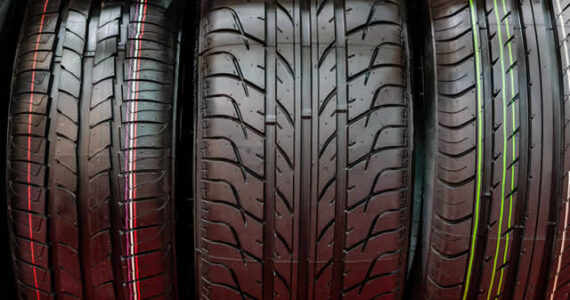Leasing a car while living or traveling abroad can feel like the perfect solution—until you realize you’ve signed a contract that’s far longer or more restrictive than you expected.
From complex foreign leasing laws to hidden fees and rigid mileage limits, there are plenty of traps that can turn a convenient arrangement into a frustrating and expensive commitment.
With the right information and mindset, you can lease a car abroad on your terms, avoid long-term regrets, and hit the road with confidence.
Understand Why You’re Leasing and For How Long
Before diving into a leasing agreement, it’s important to define your needs and goals. Are you temporarily working abroad? Traveling for a few months? Testing life in a new country before settling down?
Knowing your timeframe helps you filter out lease options that are too long or inflexible. Some companies might try to lock you into 24 or 36-month terms that make sense for residents, not short-term visitors.
A clear understanding of your time abroad and transportation needs is the foundation of choosing the right lease. Be honest with yourself, and don’t overcommit just to save a bit on monthly payments. Flexibility often costs slightly more upfront, but it can save you a fortune—and a headache—later on.
Compare Leasing to Renting and Buying
Leasing isn’t always the best option. Depending on how long you’re staying and how much you’ll drive, renting a car could be more practical—even if it’s slightly more expensive per day. Rentals often come with built-in insurance, no maintenance obligations, and full freedom to stop at any time.
Alternatively, if you’re abroad for more than a year, buying a used car and reselling it later could save you money. And if you’re moving abroad permanently and already own a car you love, you might want to consider shipping cars vs buying new ones. To decide what is better for you, weigh the costs and lifestyle fit of each option.
Choose the Right Type of Lease for Your Situation
Not all leases are created equal. If you’re only staying for a few months, look into short-term leases, also known as buy-back leases or temporary rentals. These options are particularly popular in European countries like France or Germany, where programs allow non-residents to lease a brand-new vehicle for periods as short as three weeks.
Another alternative is leasing from local dealerships offering flexible packages for expats or digital nomads. These are often less rigid than traditional leases and cater specifically to people in transition. Do your research to find companies that understand the unique needs of foreigners—this can make the entire process much smoother.
Pay Attention to the Fine Print
It’s tempting to sign quickly when the vehicle looks great and the price feels right. But don’t rush. Contracts in a foreign country may use unfamiliar legal terms, and important details like mileage caps, insurance requirements, and early termination fees might be buried in the fine print.
Make sure you know what’s included and what’s not. Are maintenance costs covered? What happens if you return the car early? Is there a grace period for cancellation? A translated copy or legal assistance can help you interpret any clauses that seem unclear. A few extra hours spent reading now could save you months of regret later.
Consider Using Reputable International Leasing Companies
One of the safest ways to lease a car abroad is through well-established international leasing providers. These companies often have programs designed specifically for travelers, students, expats, and even military personnel. They understand the complications that can arise when dealing with foreign driving laws, registration systems, and language barriers.
Brands like Peugeot Open Europe or Renault Eurodrive, for example, offer "buy-back" lease options where you get a new car for a fixed term, with full insurance and zero-risk of long-term entanglement. These can be a smart way to lease without actually committing to a traditional, long-term lease contract.
Beware of Local Scams and Too-Good-To-Be-True Deals
Unfortunately, not all offers are legitimate. In some regions, especially tourist-heavy areas, you might encounter rental or lease scams that involve fake listings, poor-quality vehicles, or contracts that suddenly change terms after you’ve signed. Always work with licensed companies and ask for reviews or references when possible.
Avoid paying large deposits in cash, and steer clear of any company that refuses to provide a contract or documentation in writing. Trust your instincts—if something feels off, walk away. A legitimate company will always welcome questions and provide transparent answers.
Know the Rules of the Road in the Country You’re In
Leasing a car is one thing—driving it legally is another. Some countries require an International Driving Permit (IDP), while others accept foreign licenses only for short durations. Make sure you’re legally covered to drive, and check if the lease provider offers support with registration, toll payments, or emissions stickers (which are necessary in some European cities).
Failing to follow local driving laws could result in fines or even having your vehicle impounded, which can void your lease and leave you liable for penalties. Do your homework to avoid unnecessary trouble.
Ask About Early Termination and Contract Flexibility
Life changes. Your job might relocate you. A visa might expire. You might fall in love with a town and decide to stay longer—or head home early. Whatever the reason, make sure your lease has a clear early termination clause.
Some contracts allow for early exits with minimal fees, while others might require you to pay for the entire term regardless of use. Flexible contracts are worth the slightly higher monthly rate because they adapt to your life, not the other way around.
Understand What Insurance You’ll Need
Leasing a car almost always requires insurance, and it might not be included in the monthly payment. Some lease companies offer comprehensive packages that cover theft, damage, and third-party liability. Others leave it up to you to arrange separate coverage, which can be tricky in a country where you don’t speak the language or know the insurance providers.
Check if your travel insurance or credit card offers vehicle protection. Some international insurers also specialize in short-term auto coverage for expats and travelers. Just don’t assume you’re covered until you’ve read the details. Driving without valid insurance can lead to serious legal and financial problems abroad.
Watch for Mileage Limits and Other Usage Restrictions
Many leases come with mileage restrictions, and going over those limits can get expensive fast. Think about your travel plans and daily use. Will you be commuting long distances? Exploring rural areas? If so, make sure your lease gives you enough freedom to enjoy your trip without stressing about every kilometer.
Other limitations might include where you can drive the car (some leases restrict travel across borders), who is allowed to drive it, or how often you must service it. Clarify these points before you commit.
Final Thoughts: Make the Smart Choice for Your Journey
Leasing a car abroad doesn’t have to be complicated—or regrettable. With a bit of preparation, the right lease can offer you the convenience and freedom to explore a new country without the baggage of long-term commitment. The key is to know your goals, understand the local market, and avoid rushing into contracts that don’t serve your lifestyle.
When you decide to lease a car abroad, always choose transparency over the cheapest deal, and make sure any agreement you sign offers flexibility. Whether you’re abroad for a few weeks or several months, there are leasing options tailored to you—you just need to find them.
image credit: envato.com


















